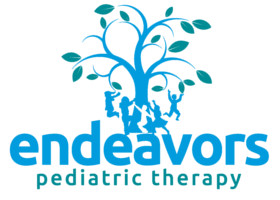Is Your Child at Risk of Developing Muscular Dystrophy? Our Pediatric Therapy Services Can Help
As a parent, the only thing harder than dealing with a chronic health condition of your own is seeing your child deal with one. Muscular dystrophy is a frightening condition that usually comes with a lot of uncertainties and confusion about the future, and when faced with a chronic illness like this, it is natural to want to sit back and lament what has gone wrong. However, this is the wrong path to go down.
Taking early action to assist the child’s success in childhood physical therapy will make a significant difference in their quality of life as they get older.
If you are facing a diagnosis of muscular dystrophy in your child, it is never too early to contact our pediatric physical therapist to learn more about the modes of support available to you. Call Endeavors Pediatric Therapy clinic to learn more about therapeutic prevention of this illness, and how our therapists can help manage your child’s condition if they have already been diagnosed.
What is muscular dystrophy?
Despite the fact that muscular dystrophy is one of the most researched diseases in the world, the scientific community still has a lot to learn about it. There is no cure, and no one knows why the disease progresses.
It’s highly hereditary, usually passed down through the male line of the family tree, and it affects boys at an alarming pace. Even in developed countries like the United States, the disease is fairly common, with one out of every 4,000-6,000 boys being born with it.
Muscular dystrophy causes muscle weakness throughout much of the body, often leading to complete loss of muscle mass over time. It most typically impacts the arms and legs to start, and then slowly starts to impact other muscle groups as time progresses.
While there are some who are born with the disease and are never able to form enough muscle mass to walk in the first place, there are many more who lose the ability to move independently while they are still so young.
While there is no cure for muscular dystrophy, there are always things you can do to help yourself. Working with a pediatric therapist will assist you in addressing muscle loss as soon as possible. Certain physical therapy techniques have been shown to help slow the development of muscular dystrophy, giving children with this condition more opportunities to be kids.
This means more time to play, more time to explore, and more time to feel healthy and independent, as every child should.
Recognizing the signs of muscular dystrophy
For most parents of children with muscular dystrophy, the diagnosis comes as a huge surprise. The condition is not commonly discussed until the child is between the ages of 3-5, which is when most children start to become more independent and begin attending school.
At this time, there are certain signs that parents can be watching for. These indicators could point to a problem such as muscular dystrophy, or they could be indications of lesser issues that would still benefit from pediatric treatment with physical therapy.
These indicators include:
- A slow run
- Frequent toe walking
- Waddling gait
- Reoccurring tumbles
The most prominent first symptom of muscular dystrophy is weakness in the hips and legs, though the weakness can gradually spread to other parts of the body regardless of where it starts.
Working with a pediatric therapist may help provide more support for muscle growth.
At first, intensive physical therapy can combat some of the muscle loss. The goal of pediatric physical therapy is to help children develop muscle strength to become as flexible, strong, and symmetrical as possible.
The therapy will include a combination of therapeutic exercises, stretches, and posture training, and may also extend to include additional treatment methods, like hydro-based therapy.
How can a physical therapist help?
Physical therapy is integral to maintaining muscle functioning and avoiding joint problems. The goals of such therapy are to help a patient stay as flexible, strong, and symmetrical as possible. A physical therapist works with the child to exercise, stretch, and maintain appropriate posture.
They may assist with hydro-based therapy, and continually observe a child’s spine, respiratory, and musculoskeletal function. Physical therapists are also key in prescribing and monitoring adaptive seating and equipment.
Many parents also rely on the therapists to assist their child’s school staff with modifications, advocating for the family, and communicating with insurance companies. Even when a child is relegated to a wheelchair, physical therapy can help improve that child’s abilities.
Get your child started on the right track! Contact us today
Physical therapy can be a tremendously helpful tool, especially in the face of a muscular dystrophy diagnosis.
For more information, call Endeavors Pediatric Therapy today and speak with our physical therapy team.
Tags: Physical Therapy, Pediatric Therapy, physical activity, muscular dystrophy, Therapeutic Exercise



